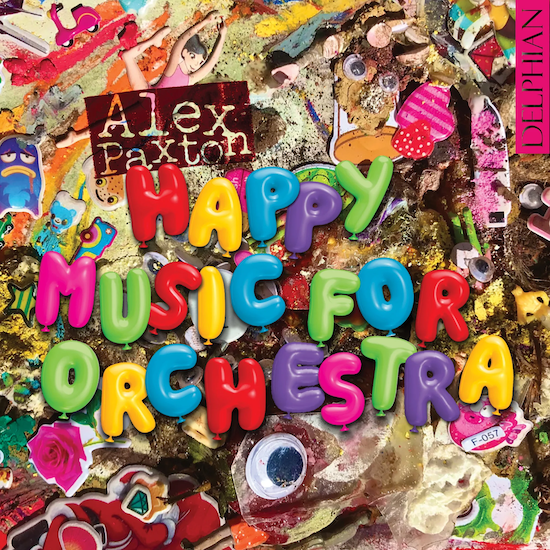In every moment of Happy Music For Orchestra, composer and trombonist Alex Paxton strives for maximised sensation. Leading an orchestra through chaotic arrangements at breakneck speed, often recalling Scott Bradley’s scores for Tom & Jerry, he builds a cartoonish world of blinding colour, elastic movement and warm humour. His trombone becomes this world’s cheerful, flatulent main character: waddling into frame to introduce album-opener ‘Love Kittens’ with a burbling melody, before a sparkling burst of strings, celeste and crotales sweeps it into six tracks of frenzied action.
This impulsivity and cartoonish voice underscores Happy Music For Orchestra’s childlike character. Paxton has taught and scored music for children as young as reception-age, including the concert opera Noggin And The Whale. These experiences are reflected in the album’s frequent discordancy (evoking shambolic school orchestras), emotional immediacy and occasionally childish humour: ‘Water Music’ features several flushing toilets. The ecstatic surges and sudden lulls of ‘Ody Ody Pink’d’ evoke a child gradually tiring themselves out with play, marked by the trombone’s exhausted bleats. Paxton’s lyrics in ‘Strawberry’ speak excitedly of the colour “rainbow brown,” evoking the mixing of vivid colours into a neutral tone: one of the first experiments many of us undertake in our finger-painting days.
These evocations of school-age children – inching towards the conformity of adulthood – point to the relationship between free improvisation and complex structure in Happy Music For Orchestra. Paxton’s improvised trombone navigates arrangements which, in their elasticity and page-blackening density, give the mere impression of improvisation. In ‘Water Music’ he passes this role to Beibei Wang’s water percussion: her improvisational performances employ water bottles, bowls of water, bath toys and ‘water drumming’ inspired by the Baka traditions of Central West Africa. The relationship between improvisation and intricate composition is seen most starkly in ‘Strawberry’. In the introduction, improvised trombone and unmetered drumming are counterposed with meticulous, finger-breaking arrangements. Vocalist Patrick Terry gives a technically masterful, acrobatic performance of Paxton’s impulsive, unmeasured lyrics: “Let’s sing a song now! Ah, singing low, lullaby, let’s make the town here!” In these moments, Paxton presents tension between raw, fleeting sensation and the restrictive geometry of adulthood.
In Happy Music For Orchestra’s closing track ‘Bye’, we see most clearly how these techniques serve rich emotional expression. A four-voice arrangement of low wind, two trombones and a Wurlitzer repeats a gorgeous, yearning melody. Taking on an increasingly breathy, anguished tone, it never quite resolves: the difficulty of saying goodbye to a loved one is conveyed with moving realism. In focusing on raw sensation, Happy Music For Orchestra’s cartoonish character proves a disarmingly naturalistic, powerful means of expressing real emotion.


